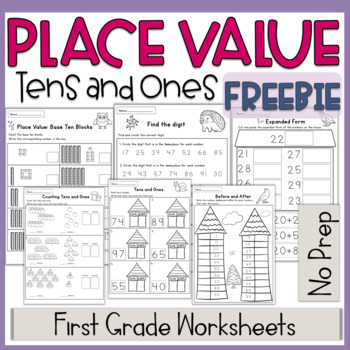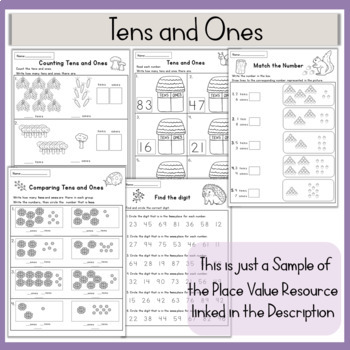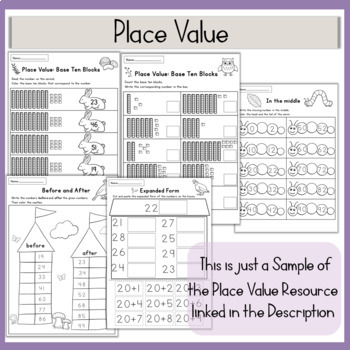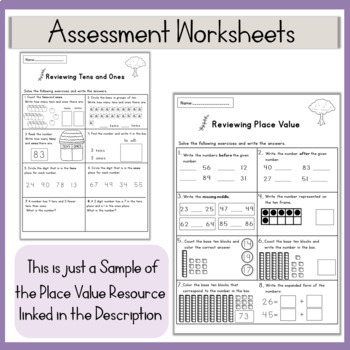Ale's Blooming Corner
427 Followers
Grade Levels
1st - 2nd, Homeschool
Subjects
Resource Type
Standards
CCSS1.NBT.B.2
CCSS1.NBT.B.2a
CCSS1.NBT.B.2b
CCSS1.NBT.B.2c
CCSS1.NBT.B.3
Formats Included
- PDF
Pages
9 pages
Ale's Blooming Corner
427 Followers
Description
This free math packet is perfect for place value and tens and ones practice! Students will improve their math skills with activities such as: counting tens and ones, place value base ten blocks, expanded form - cut & paste activities.
It is a selection of 5 worksheets that can be used without previous preparation:
- counting tens and ones,
- matching the number,
- before and after,
- place value base ten blocks
- expanded form - Cut & Paste Activities
This resource can be used in:
- Math centers or stations
- Small groups
- Early Finishers
- Morning Activity
It is a great resource for both classroom use or homeschooling use.
Full Resource:
First Grade Place Value and Tens and Ones Worksheets - over 60 pages of place value progressive worksheets:
- counting tens and ones,
- comparing tens and ones,
- place of numbers,
- base ten blocks
- word problems
- 2 worksheets for reviewing learned concepts which can be used as assessments.
Follow my store to be notified of new resources: Ale's Blooming Corner
Do not forget to leave feedback so that you can get TPT Credits for future purchases.
Total Pages
9 pages
Answer Key
N/A
Teaching Duration
N/A
Report this resource to TPT
Reported resources will be reviewed by our team. Report this resource to let us know if this resource violates TPT’s content guidelines.
Standards
to see state-specific standards (only available in the US).
CCSS1.NBT.B.2
Understand that the two digits of a two-digit number represent amounts of tens and ones. Understand the following as special cases:
CCSS1.NBT.B.2a
10 can be thought of as a bundle of ten ones - called a “ten.”
CCSS1.NBT.B.2b
The numbers from 11 to 19 are composed of a ten and one, two, three, four, five, six, seven, eight, or nine ones.
CCSS1.NBT.B.2c
The numbers 10, 20, 30, 40, 50, 60, 70, 80, 90 refer to one, two, three, four, five, six, seven, eight, or nine tens (and 0 ones).
CCSS1.NBT.B.3
Compare two two-digit numbers based on meanings of the tens and ones digits, recording the results of comparisons with the symbols >, =, and <.





